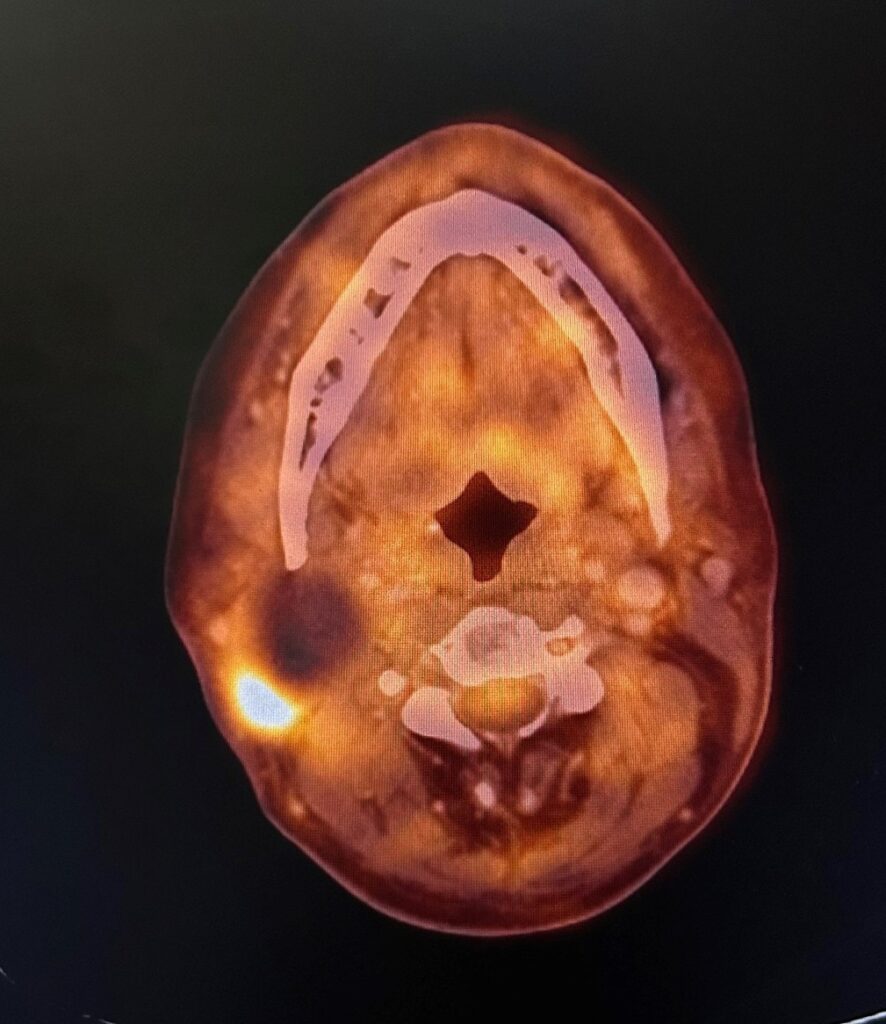Swollen neck lymph nodes cancer danger is often one of the first indicators that something is amiss in the body, as these nodes play a critical role in the immune system by filtering out harmful substances. While enlarged lymph nodes can result from common infections, such as colds or sore throats, persistent swelling can sometimes signal a more serious issue, such as cancer. In some cases, the swelling in the neck lymph nodes can be more dangerous than the original site of cancer, necessitating immediate and aggressive medical intervention. Understanding when and why this occurs is crucial for timely diagnosis and treatment.
Understanding Lymph Nodes and Their Role in Cancer
Lymph nodes are small, bean-shaped structures that are part of the lymphatic system, which is crucial for immune function. They filter lymph fluid, trapping bacteria, viruses, and other foreign substances, which are then destroyed by lymphocytes (a type of white blood cell). The lymphatic system is spread throughout the body, with clusters of lymph nodes in areas such as the neck, armpits, and groin.
When cancer cells break away from a primary tumor, they can travel through the lymphatic system to other parts of the body, a process known as metastasis. The neck lymph nodes are common sites for metastatic spread, especially for cancers originating in the head and neck regions, such as oral, throat, and thyroid cancers. However, cancers from other areas, such as the breast, lungs, or skin, can also spread to the neck lymph nodes.
When Swelling in Neck Lymph Nodes Indicates a Serious Threat
Not all Swollen neck lymph nodes cancer danger is indicative of a severe condition. However, certain characteristics of lymph node swelling can suggest a more dangerous scenario:
-
Persistent Swelling: If the swelling in the lymph nodes does not subside over a few weeks or continues to grow, it may indicate the presence of cancer cells. Persistent swelling warrants medical evaluation, especially if accompanied by other symptoms such as unexplained weight loss, night sweats, or fatigue.
-
Hard, Fixed Nodes: Lymph nodes that feel hard or rubbery to the touch and do not move easily when pushed are concerning. These characteristics can suggest that the nodes are infiltrated with cancer cells, making them more rigid and immovable.
-
Rapid Growth: Rapidly enlarging lymph nodes can be a sign of aggressive cancer spread. Such growth may outpace the body’s ability to fight the cancer cells, leading to more severe symptoms and complications.
-
Associated Symptoms: Symptoms such as difficulty swallowing, hoarseness, or persistent sore throat, along with swollen lymph nodes, can indicate the involvement of nearby structures, suggesting a more extensive spread of cancer.
-
Multiple Enlarged Nodes: The presence of multiple swollen lymph nodes in different areas of the neck or other parts of the body may suggest widespread metastatic disease. This can be more challenging to treat and may indicate a more advanced stage of cancer.
Why Neck Lymph Node Swelling Can Be More Dangerous Than the Primary Tumor
In some cases, the swelling of lymph nodes in the neck can pose a greater immediate danger than the primary tumor for several reasons:
-
Risk of Blockage and Compression: Swollen lymph nodes in the neck can grow large enough to compress vital structures, such as the airway or blood vessels. This can lead to breathing difficulties, reduced blood flow, and other life-threatening complications that require urgent medical attention.
-
Indicator of Advanced Disease: Lymph node involvement often indicates that the cancer has spread beyond the original site, signifying a more advanced stage. This can make treatment more complex and reduce the likelihood of successful outcomes.
-
Potential for Systemic Spread: Swollen lymph nodes can be a sign that cancer cells are spreading through the lymphatic system to other parts of the body, such as the lungs, liver, or bones. This systemic spread can lead to multiple secondary tumors, making the disease more challenging to control and treat.
-
Impact on Treatment Choices: The presence of cancer in the neck lymph nodes can alter the treatment approach. It may necessitate more aggressive treatments, such as extensive surgery, higher doses of radiation, or combination chemotherapy, which can have significant side effects and impact the patient’s quality of life.
Diagnosis and Evaluation of Swollen Neck Lymph Nodes
Prompt and accurate diagnosis of swollen neck lymph nodes is essential to determine the cause and appropriate treatment. The evaluation typically involves:
-
Physical Examination: A healthcare provider will examine the size, consistency, and mobility of the swollen lymph nodes and assess for other signs of cancer or infection.
-
Imaging Studies: Ultrasound, CT scans, or MRI may be used to assess the lymph nodes’ size, shape, and involvement with surrounding tissues. These imaging techniques help visualize the extent of the swelling and potential spread of cancer.
-
Biopsy: A biopsy involves taking a sample of tissue from the swollen lymph node for microscopic examination. This is the definitive method to determine if cancer cells are present and to identify the type and origin of cancer.
-
Blood Tests: Blood tests can help detect markers of infection, inflammation, or cancer and provide information about the overall health and function of the immune system.
-
PET Scans: Positron emission tomography (PET) scans can help identify cancerous cells in lymph nodes and other parts of the body by highlighting areas of increased metabolic activity.
Treatment Options for Cancerous Neck Lymph Nodes
When neck lymph nodes are involved in cancer, treatment options vary depending on the type and stage of cancer, the extent of lymph node involvement, and the patient’s overall health. Common treatment approaches include:
-
Surgery: Surgical removal of affected lymph nodes (lymphadenectomy) may be necessary to prevent further spread of cancer. Surgery can be curative if cancer is detected early and confined to a limited number of nodes.
-
Radiation Therapy: Radiation therapy targets and destroys cancer cells in the lymph nodes and surrounding tissues. It is often used after surgery to eliminate residual cancer cells or as a primary treatment for inoperable cases.
-
Chemotherapy: Chemotherapy uses drugs to kill cancer cells or stop them from dividing. It is often used for cancers that have spread to multiple lymph nodes or other parts of the body. Chemotherapy can be administered orally, intravenously, or directly into the affected area.
-
Targeted Therapy: Targeted therapy involves drugs that specifically target cancer cells based on their genetic or molecular characteristics. These treatments can be effective in cases where traditional chemotherapy is less effective.
-
Immunotherapy: Immunotherapy helps boost the body’s immune system to fight cancer. It can be an option for certain types of cancers that have spread to the lymph nodes and other areas.
-
Clinical Trials: Patients with advanced cancer involving the neck lymph nodes may consider participating in clinical trials that offer access to new and experimental treatments.
Conclusion
Swollen neck lymph nodes cancer danger can be a sign of a more serious and dangerous situation than the original site of cancer. When lymph nodes become involved, it often indicates that the cancer has spread, making it more challenging to treat and potentially more life-threatening. Recognizing the signs of dangerous lymph node swelling, seeking prompt medical evaluation, and understanding the available treatment options are crucial steps in managing cancer effectively. Early detection and aggressive treatment can help improve outcomes and provide a better quality of life for those affected by cancer.
45 years male diagnosed as case of carcinoma Hard palate. Cytology was suggestive of malignant cells, keratinizing squamous cell ca. His CECT Neck revealed right side palate lesion in posterior part with irregular soft tissue thickening 1.7×1.3×0.8 cm with mild extension into anterior part soft palate ? Mitotic. He received 3 cycles of chemotherapy and no further treatment.
After 8 months he had right side neck lymph node. He was treated with Chemotherapy and Radiation Therapy. There was persistent residual neck node in right side neck
Considering short time interval from radiation therapy and large size of lymph node he received further chemotherapy. His PET CT later on show right neck node decrease in metabolic activity

There were some very difficulty challenges in this case
- Right Level II Neck Node – reaching upto Skull Base
- Distal Control of Internal Carotid artery not possible
- Ballon testing to occlude internal carotid artery is option – hesitant in post radiation setting and later interpretation.
- Apart from Surgery, no other curative option left.
So, with thorough understanding an innovative approach was planned for this case.
* INTERNAL CAROTID ARTERY STENTING was done.
Following which he was kept on blood thinner and metronomic chemotherapy for 8 weeks. After which he underwent definitive Surgery.


He underwent Surgery: Right radical Neck Dissection + External Carotid Artery excision + Internal jugular vein excision + Pectoralis Major Myocutaneous Flap. Lower division of facial nerve identified and saved with excision of cervical branch and lower parotid gland. Internal Carotid artery and Vagus nerve were saved. Patient was discharged in time.

Difficult scenario in advance cancer patients sometimes requires extreme measures in safe manner for cure and successful outcome.
Discover more from CancerSurgery
Subscribe to get the latest posts sent to your email.




